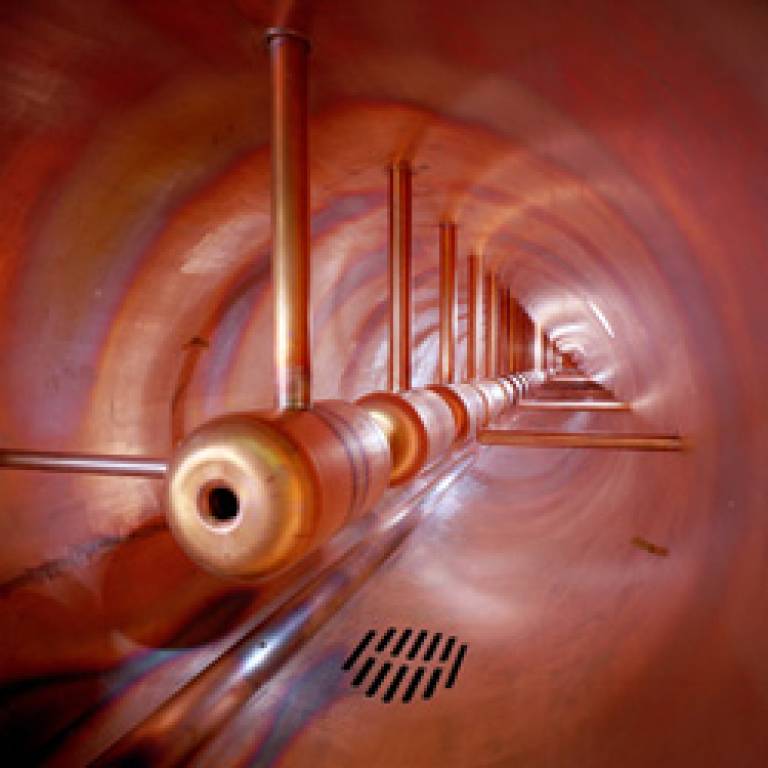Scientists move closer to Higgs boson discovery
9 January 2007
At the Fermilab National Accelerator Laboratory in Batavia, Illinois, an international team of scientists, including members of UCL Physics, has made the most precise measurement to date of the mass of the W boson, a sub-atomic particle.

The discovery means that the average mass of the W boson, taken from data collected from research all over the world, is now accurate to within 0.06 per cent. The W boson particle carries the weak nuclear force and is an important part of the 'standard model' of particles and forces - a theory governing how three of the four types of energy (strong, weak and electromagnetic, but not gravity) work.
The knock-on effect of this discovery is that the Higgs boson - a particle that has not yet been discovered, but which is thought to be the missing step to completing the standard model - is lighter than previously thought. Knowing this, it will be easier to detect the particle in future experiments.
The data on the W boson was obtained at the Tevatron particle accelerator, which fires particles into each other at high speed and analyses the fall-out from their collisions. With many millions of collisions taking place simultaneously and over an extremely short period, massive quantities of data are being generated at the site near Chicago.
Dr Robert Staffin, associate director for high energy physics and the US Department of Energy's Office of Science, said: "This new precision determination of the W boson mass by CDF is one of the most challenging and important measurements from the Tevatron. Together the W-boson and top-quark masses allow us to triangulate the location of the elusive Higgs boson."
Image: A section of tubing like that in the Tevatron particle accelerator, in which particles are collided at very high speeds.
- Links:
- UCL High Energy Physics group
- Fermilab
- Previous Fermilab stories: October 06 September 06 February 06
 Close
Close

